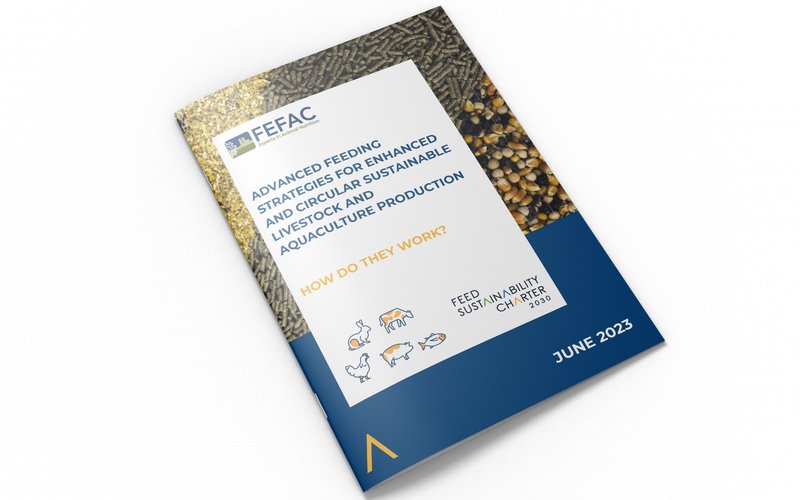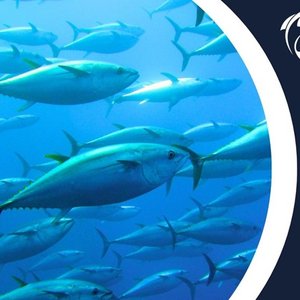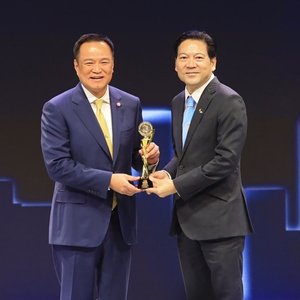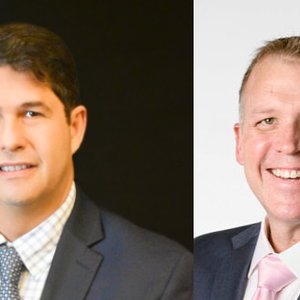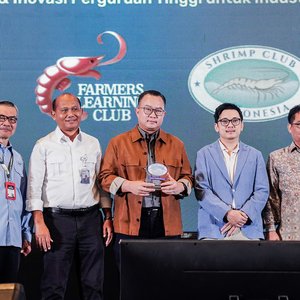FEFAC initiated an awareness campaign on the potential benefits of advanced feeding strategies for enhanced and circular sustainable livestock and aquaculture production. The objective is to facilitate access to chain partners and decision-makers to sound scientific-based information on the techniques themselves, how they work and for which species, but also some considerations on the economic impacts and trade-offs.
FEFAC decided to highlight the contribution of animal feeding strategies with a new publication on Advanced animal feed strategies to support the transition towards more sustainable and circular livestock and aquaculture production. This publication is focusing on the five key ambitions detailed in the FEFAC Feed Sustainability Charter 2030.
The EU Green Deal, particularly the Farm to Fork Strategy, accelerated research to address key sustainability challenges, such as climate change, deforestation and animal health and welfare. Innovation is taking place at a fast pace and the number of scientific publications on animal nutrition is permanently on the rise. Emerging feeding techniques enabling the reduction of ammonia or methane emissions are now available in the marketplace. Likewise, a series of different dietary approaches can help minimize the need for antibiotics or help improve the welfare of animals.
However, the uptake of these advanced feeding techniques still faces some obstacles. Their potential to reduce the environmental impact of feed sourcing or digestion or maintaining the health status and enhancing the welfare of livestock and aquaculture animals lacks visibility and these solutions remain consequently underrated. One illustration of this is the low level of uptake of dietary interventions in the design of the CAP National Strategic Plans by Member States in 2023: only Portugal and Belgium (Flanders region) have made eligible to CAP support certain animal nutrition solutions to improve resp. feed efficiency and reduce enteric methane emissions.
Asbjørn Børsting, FEFAC president, stressed that “it is high time for the feed industry to show and prove what animal nutrition can deliver to the livestock and aquaculture sectors for the green transition so that decision-makers and chain partners can evaluate and approve the investment potential of such feeding technologies in full confidence.”
Fifteen years ago, a major issue for the livestock sector was the emission of phosphorous. The use of phytase to improve digestibility of the phosphorous in the diet, thereby reducing the total amount of phosphorous in feed, dramatically lowered the emissions of phosphorous which is no longer seen as a major issue these days. This success story provides a clear track record of the ability of the feed industry to deliver against its societal commitments.
Animal nutrition alone is not a silver bullet to address all challenges the livestock sector faces. At the same time, the pressure points on sustainability are very different depending on animal species. This is why FEFAC wants to be transparent and also spot trade-offs or economic impacts that can sometimes be negative. However, FEFAC is convinced that the EU feed industry can greatly contribute to more sustainable livestock and aquaculture production, as it is committed to in the Sustainability Charter 2030.
“We want to show the decision makers, our chain partners and the public that there is a science-based alternative to having a narrow focus of simply bringing down the livestock population in the EU, which would only increase the EU reliance on third-country imports to feed itself with high-value livestock and aquaculture proteins,” Børsting added.
Practical case studies showcasing existing animal feeding strategies are now available online on the FEFAC website.


